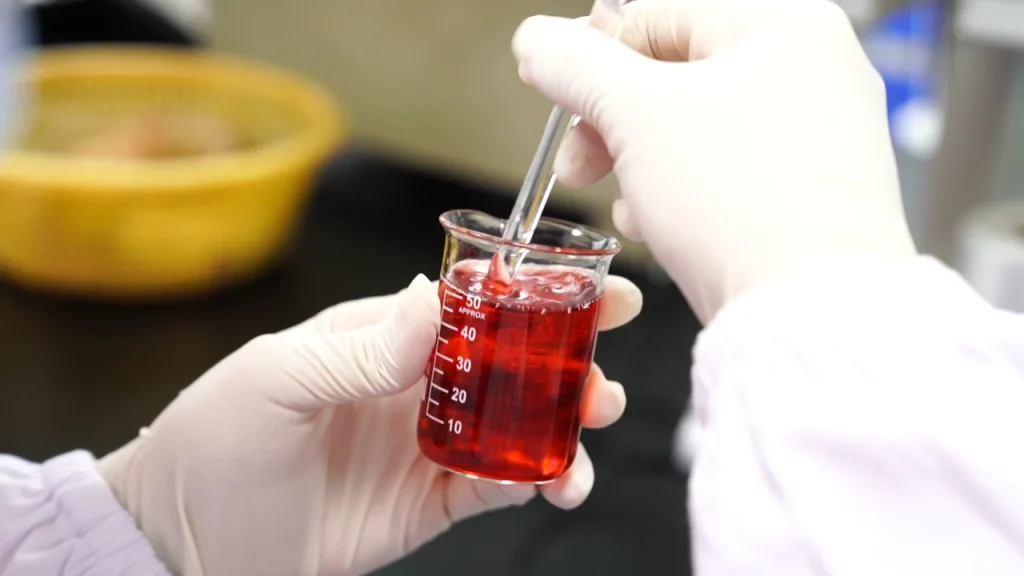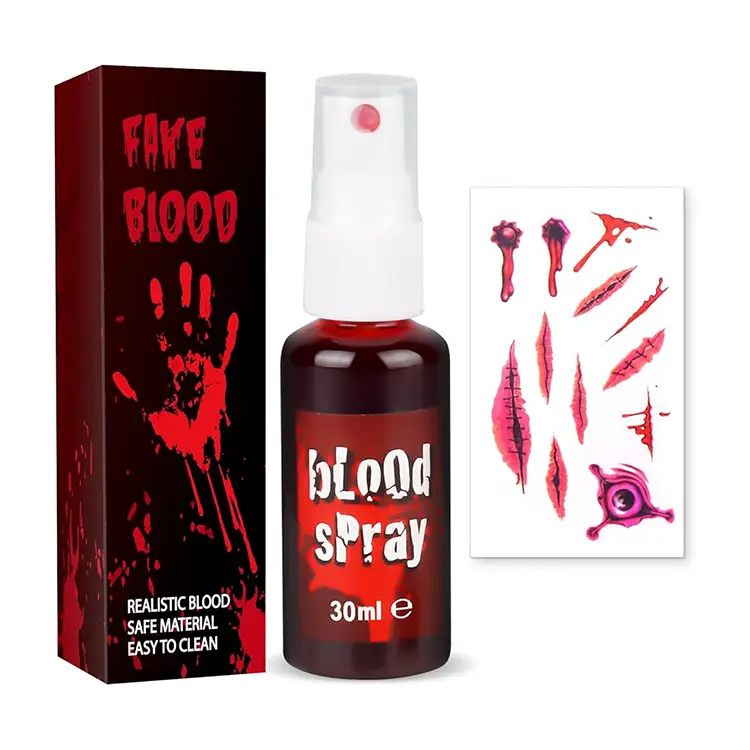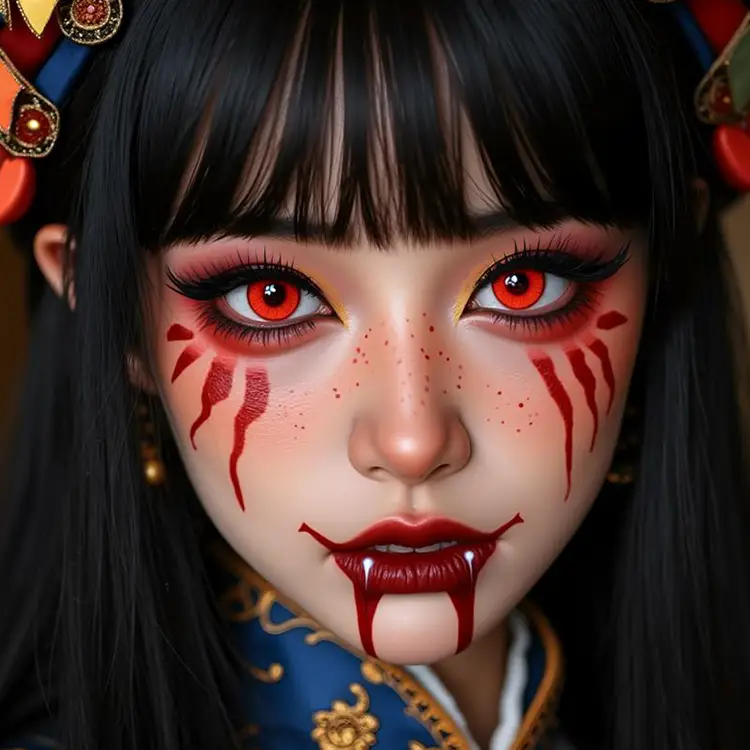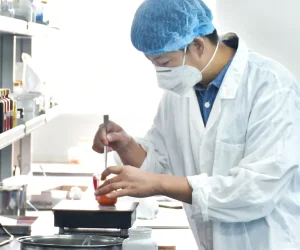Does Fake Blood Smell? Exploring Science, Safety, and Fun Facts
Table of Contents
Fake blood has been part of theater and film for decades, helping actors look wounded or spooky without risk. In recent years, children’s makeup toys also use it in safe forms for pretend play. Because it looks so real, many wonder if it also smells like real blood.
The question of smell often comes up during Halloween or stage rehearsals. Some kids notice a sweet or chemical odor, while others say it has no scent at all. These different reactions raise a simple but curious point: what exactly makes fake blood smell—or not?
What Is Fake Blood Made Of?
Fake blood is created to look realistic but stay safe for skin and costumes. Its formula depends on the purpose—stage, film, or children’s toys. Understanding the ingredients helps explain whether it has a smell or not.
Ingredients in Theater and Film Fake Blood
Stage and film versions often use water, food coloring, thickeners like corn syrup, and preservatives. Some recipes add cocoa powder or other agents for texture and color depth. These materials are safe on skin but may leave behind faint odors, often sweet or syrupy.
In certain cases, fake blood for film contains more advanced formulas. Special effects artists sometimes add glycerin for shine or surfactants to change flow. While harmless when used properly, these additions may carry mild chemical notes that some noses pick up quickly.
Ingredients in Children’s Makeup Toys
For kids, safety is the top concern. Fake blood in makeup kits or toys is usually water-based with simple food-grade colorants. Manufacturers often avoid strong scents, since fragrances can cause irritation in sensitive users.
Still, even safe ingredients may have subtle odors. For example, a gel made with starch or syrup might smell faintly sweet, while one with preservatives could carry a mild “plastic-like” scent. Most children describe it as barely noticeable once applied.
Does Fake Blood Smell? The Straight Answer
The short answer: sometimes yes, sometimes no. The scent depends on what’s inside the product. Some fake blood has a faint odor, while others are designed to be odorless.
Natural odors from ingredients
Many common ingredients carry their own mild scent. Corn syrup often smells sugary, cocoa powder has a chocolate note, and certain preservatives leave behind a faint chemical-like aroma. None of these smells are strong, but in a closed room or on sensitive skin, they can be noticed.
Think of it like opening a box of crayons—you don’t expect perfume, but there’s still a “something” in the air. The same idea applies here: fake blood has its own quiet signature, shaped by what holds the color and thickness together.
Why some fake blood products are odorless
Some manufacturers deliberately design their products without noticeable smells. This is especially true for fake blood used in children’s makeup toys or for actors who must wear it for long hours.
To achieve this, they often use water-based formulas with neutral thickeners and safe dyes. These blends reduce irritation and avoid distracting scents. As a result, when applied, there’s almost no odor—just the visual effect.
The Science Behind Scents in Fake Blood
Smell is not just about whether something has a scent—it’s about how molecules travel and how our nose detects them. Fake blood is no exception.
Chemical composition and odor molecules
Most fake blood products rely on a mix of water, thickeners, dyes, and sometimes preservatives. These ingredients can release tiny odor molecules into the air. For example, stabilizers may carry a faint “plastic-like” note, while natural sugars can create a sweet trace.
The amount of each molecule matters. A small shift in formula can mean the difference between something you barely notice and something that lingers in the air. Scientists call this the “odor threshold,” which is the lowest level your nose can detect.
How the human nose perceives faint vs. strong smells
The human nose is surprisingly sensitive. According to research published in Chemical Senses (2021), some people can detect odors at concentrations as low as a few parts per billion. That’s like sensing one drop of dye in an Olympic-sized pool.
So when one person says fake blood smells like sugar and another says it smells like nothing at all, both can be right. Perception depends on individual sensitivity, the setting, and even how long someone has been exposed.
Safety Considerations with Fake Blood Smell
Smell is more than just a curiosity—it can sometimes hint at what’s inside the product. For parents, teachers, or performers, safety should always come first.
Understanding skin sensitivity and fragrance allergies
Even a mild scent in fake blood may come from added fragrance or preservatives. While most formulas are harmless, some people have skin that reacts to these extras. Redness, itching, or dryness are common signs of sensitivity.
Children are often more vulnerable since their skin barrier is thinner. A product that feels fine on an adult might leave a child uncomfortable after play. This is why patch testing—trying a small amount first—is recommended by dermatologists (Journal of Pediatric Dermatology, 2019).
Why child-safe and non-toxic labeling matters
Labels that say “non-toxic” or “child-safe” are more than marketing—they follow safety standards set by groups like ASTM or EN71. These rules check if materials are safe for direct skin contact and if any scents or dyes meet low-risk guidelines.
For families buying makeup kits or fake blood toys, these labels provide peace of mind. They show the product has passed safety checks, even if it has a light smell from its ingredients.
Fake Blood in Children’s Makeup Toys
Fake blood often finds its way into toy sets designed for Halloween, costume play, or small stage shows. These products are meant to add realism, but they also play a role in how children explore imagination through safe, guided activities.
Role of sensory play in Halloween or pretend scenarios
During Halloween or drama class, children might dab a little fake blood on their hands or face to “become” a character. This kind of sensory play supports role-play, helping kids build stories and act them out.
The texture, color, and even smell of fake blood can become part of the play. Some children enjoy the sticky feel because it adds to the “gross-but-fun” factor. It is less about looking scary and more about exploring different roles in a playful way.
Ensuring safe experiences for kids during play
Since children’s skin can be more delicate, toy makers often reduce or remove strong fragrances from fake blood in makeup kits. The goal is to keep the sensory fun without risking irritation.
Parents and teachers can also help by setting limits, such as keeping fake blood away from the eyes or mouth. Simple steps like these ensure that the excitement of play stays safe and worry-free.
Comparing Fake Blood with Other Theatrical Makeup Products
Fake blood is just one tool in the world of stage and costume makeup. Like face paint and theatrical creams, it is designed to look convincing under lights. But its smell, feel, and cleanup can be quite different.
How fake blood compares to face paint and stage makeup in smell
Face paints usually have little to no scent, especially those made for children. Stage makeup may carry a faint waxy or oily smell from its base ingredients. Fake blood, on the other hand, can range from odorless to slightly sweet or metallic, depending on the formula.
Some performers recall that fake blood used in older theater kits had a syrupy smell, while newer products often mask or eliminate odors. This contrast makes fake blood stand out compared to simpler products like water-based paints.
Differences in texture, longevity, and cleanup
Fake blood is usually sticky or runny, designed to drip like the real thing. Face paint is smoother and dries quickly, while stage makeup tends to stay creamy. These textural differences also affect how long each product lasts during a performance.
Cleanup is another key difference. Face paint often washes off with soap and water. Stage makeup may require special removers. Fake blood falls somewhere in between, with some formulas rinsing off easily and others leaving stains if not cleaned promptly.
Cultural and Historical Notes on Fake Blood
The idea of fake blood is not new. For centuries, people have used colored liquids to mimic blood in performances or rituals. What started as a mix of simple natural materials has grown into safer, specialized products for stage, film, and even children’s play kits.
Early uses of fake blood in theater and rituals
In ancient Greek theater, animal blood was sometimes used to heighten drama. Later, when live blood became impractical, substitutes like wine, red ochre, or syrupy plant dyes were adopted. These materials carried strong smells, which often became part of the performance atmosphere.
Some rituals across cultures also used symbolic “blood” mixtures, blending herbs or fruit juices. These early forms highlight how societies connected color, scent, and drama with emotional effect long before modern chemistry entered the scene.
Evolution of formulas in modern entertainment and play
By the 20th century, stage and film productions needed blood that looked realistic under lighting. Early recipes used corn syrup and food dye, which gave a sticky texture and a sweet smell. While effective, they were messy and sometimes attracted insects.
Today, most fake blood is made with non-toxic ingredients, often odorless or lightly scented. Child-friendly kits use safe dyes and gels that wash off easily. This shift shows how cultural demand for realism met modern safety standards, blending history with science.
Sensory Perception and the Psychology of Smell
Smell is a powerful sense that influences how we experience the world. Fake blood may look realistic, but the presence—or absence—of a scent affects how believable it feels in theater, film, and play.
Why smell influences realism in theater and film
In performances, the nose can reinforce what the eyes see. A faint sweet or metallic note from fake blood can make scenes feel more authentic, while odorless formulas rely purely on visual cues. Directors and special effects teams carefully balance scent, color, and texture to create convincing illusions.
Even subtle smells can trigger emotional responses. Studies in Chemical Senses (2020) show that certain odors can increase immersion, making audiences perceive scenes as more intense or realistic.
How kids interpret sensory cues in playtime
Children often notice smells more keenly than adults. During pretend play with fake blood, even a mild odor can add to the excitement or “gross factor.” Kids may comment on the smell, enhancing storytelling and role-play.
However, safe formulations ensure the scent does not cause discomfort or irritation. This balance allows children to explore sensory cues, make imaginative decisions, and learn about cause-and-effect in a controlled environment.
Tips for Parents and Educators on Using Fake Blood Safely
Fake blood can be exciting for kids, but adults need to ensure it’s used safely and hygienically. Handling odors and teaching responsible play are key parts of a safe experience.
How to handle odor concerns at home or in classrooms
Even child-safe fake blood may have a faint scent. Using it in well-ventilated areas helps minimize odor buildup. For younger children, keeping applications small and contained—like on hands or small costume areas—reduces exposure to any smell.
Regular cleaning of surfaces and washing hands afterward also ensures that any residue or faint odor doesn’t linger, maintaining a comfortable environment for everyone.
Teaching children safe and respectful play with makeup toys
It’s important to guide children in using fake blood responsibly. Show them where it is safe to apply and emphasize that it is for play only. Encourage storytelling and role-play without letting the product go near eyes, mouth, or sensitive skin.
These lessons not only protect children physically but also teach respect for toys, peers, and shared spaces. Kids learn that safe play can be fun, immersive, and creative all at once.
Environmental and Storage Factors That Affect Fake Blood Smell
Fake blood’s scent can change over time depending on where and how it is stored. Understanding these factors helps keep it safe, clean, and as odorless as intended.
How heat, light, and age can change odor
High temperatures and direct sunlight can break down ingredients in fake blood, releasing stronger odors. Similarly, older products may develop a slight chemical or syrupy smell as preservatives degrade. Even sealed containers are not immune—age can alter the scent profile subtly over months.
For children’s makeup toys, these changes are usually minor, but they can be noticeable to sensitive noses. Recognizing that odor may shift naturally helps adults assess if a product is still safe to use.
Safe storage practices for long-term use
To maintain quality, store fake blood in a cool, dark place away from heat sources. Keep containers tightly closed to prevent contamination and limit exposure to air, which can speed up chemical changes.
Following these storage guidelines ensures the product remains safe, minimizes any unexpected smells, and provides a consistent experience for theater, film, or play.
Conclusion
Fake blood’s scent varies by formula, ingredients, and storage. Understanding its chemistry and safety ensures fun, realistic play or performance without risk, especially for children.
FAQ
Some fake blood formulas use corn syrup, sugar, or cocoa powder to create texture and color. These ingredients release mild sweet scents, which can be noticed during use.
While most fake blood is non-toxic, some ingredients like preservatives or dyes can irritate sensitive skin. Patch testing a small area is recommended, especially for children.
Many child-safe fake blood products are designed to be odorless or have minimal scent. However, faint traces from thickeners or food-grade dyes may still be detectable.
Heat, sunlight, and age can change the odor of fake blood. Keeping it in a cool, dark, tightly sealed container helps maintain minimal or no smell over time.
Fake blood may have a faint sweet or chemical odor, while face paint and stage makeup often smell waxy or neutral. The difference comes from the ingredients and formula design.









